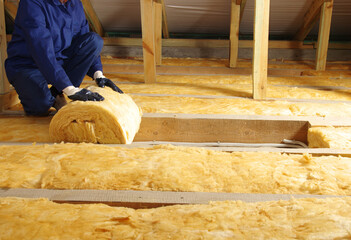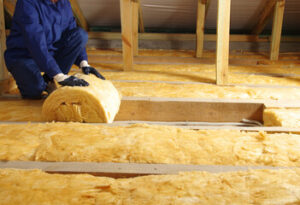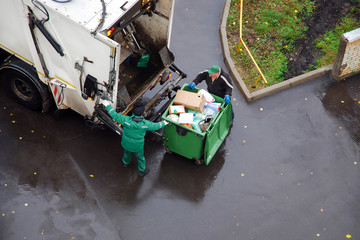New windows can make a big difference in how your home looks and functions. But before jumping into research, you need to understand your goals and priorities for the project.
Insert Replacement Windows Potomac (also known as pocket windows) directly into existing frames. This allows you to preserve your home’s original style while upgrading its performance.
There is a lot to consider when selecting new windows. Style, color, material, type, price, installation tactics and installers are all considerations, but the most important factor for most homeowners is energy efficiency. New replacement windows with low-E, insulated glass provide improved insulation and prevent air leaks. This will help your home stay at a comfortable temperature without excessive use of the furnace or air conditioner.
Energy efficient replacement windows also reduce outside noise pollution. This can be especially beneficial for those living in cities, where the constant buzz of traffic and construction can be disruptive to sleep patterns. Noise reduction can also help people with asthma or other respiratory conditions.
Replacement windows are available in many styles and sizes, making them a great choice for a wide range of homes and structures. There are two types of replacement windows: full frame replacement windows and pocket replacement windows. Both options are less expensive than new construction windows and can be installed in older homes with existing frames. Full frame replacement windows involve removing the existing window sashes and frames, while pocket replacement windows are installed in the original window opening.
Both full frame replacement windows and pocket replacement windows can be ENERGY STAR rated. The ENERGY STAR rating is administered by the National Fenestration Rating Council and provides an independent rating of the energy performance of windows, doors, skylights and attachment products.
Aside from energy efficiency, another reason to select ENERGY STAR windows is that they have a much lower carbon footprint than standard windows. This is because they are made from recycled materials. They also require less maintenance because they don’t need to be painted as often.
Lastly, replacement windows with ENERGY STAR glass are more environmentally friendly because they don’t emit harmful UV radiation into the home. This can damage carpet, furniture and other indoor furnishings. It can also increase the risk of mildew and mold growth in the home.
Replacement windows are a great way to improve the look and feel of your home. They are also a wise investment because they can raise the value of your home. Potential buyers will appreciate the fact that you have a well-maintained, high-performance home with modern features and technologies.
Better Appearance
One of the main reasons homeowners choose to replace windows is to upgrade the look and feel of their home. Adding new windows is an easy way to give your home a fresh, updated look that increases curb appeal and can increase resale value.
New windows let more light into the home, which can make rooms feel brighter and more cheerful. They also help create a more comfortable atmosphere and can reduce the amount of energy that is needed to heat or cool the home.
Another reason for replacing older windows is to eliminate air leaks. These leaks can put extra strain on your heating and cooling system and cause drafts in the home. By eliminating these air leaks, replacement windows can save you money on utility bills.
Many older homes have windows that are outdated and don’t meet current building codes. Replacing these windows can ensure that your home meets code and keeps up with the latest trends in window design.
There are many different styles of replacement windows to choose from, so you can easily find the best fit for your home. If your old windows have a detailed grid pattern, you may want to consider changing them out for larger windows that don’t have any grids. This will allow more natural light to come into your home and will open up the view of your yard and surrounding scenery.
The most common types of replacement windows are double-hung and sliders. Double-hung windows are the most efficient opening style. They have a top and bottom sash that can be opened to let in more air and sunlight. Sliders, on the other hand, are not very efficient and rely more on other features such as low-E coatings and glazing layers to deliver top energy performance.
There is a type of replacement window that is called an insert window. These are installed within the existing frame and are a good option if you have an older home with solid, intact frames. They are similar to new construction windows but they do not have a nail fin and will require a separate framing system.
Lower Maintenance
Many homeowners are hesitant to invest in replacement windows because they think it will cost too much. They may not realize that they will save money in the long run due to decreased energy costs and less maintenance work. The best way to know if your windows need replacing is by looking for signs of wear and tear, such as water damage, drafts or condensation between the window panes.
New replacement windows will not only improve the overall look of your home but they will also require less maintenance than traditional timber frames. This is because uPVC and aluminium are made to last for a long time and won’t swell or shrink with changes in the climate. As a result, they don’t need frequent upkeep and you will have more free time to spend on other projects around the house.
In addition, if your old windows have gaps or cracks that let in cold air and hot outdoor air, they will put unnecessary strain on your heating and cooling system. This can cause your HVAC system to work harder than it should, which will increase your utility bills and impact your environment. New replacement windows will seal tightly and eliminate drafts to help keep your home comfortable all year round.
When choosing replacement windows, you should consider your options in terms of frame materials and glazing. Modern frames cut air infiltration to near zero and can slash your heating and cooling bills by up to 40 percent. Many of these new replacement windows also require less maintenance and upkeep than older timber frames, with some requiring no painting at all.
Another important factor to consider is that replacement windows can be installed without major alterations to the drywall, trim or siding of your home. This makes them a great choice for homes with period features or that are already well-curated. It’s also an effective solution if you are planning to sell your home in the future, as prospective buyers will be impressed by the reduced need for maintenance and repair work.
To learn more about your options in terms of replacement windows, contact us today. We can discuss the different benefits, costs and drawbacks of both replacement windows and new construction windows to help you make an informed decision for your home improvement project.
Increased Home Value
In the real estate market, properties with modern upgrades are often the most sought after. Whether it’s a new roof, updated appliances, or new windows, these updates will boost the home’s resale value and appeal to potential buyers. New windows will not only enhance the look of your home, but they will also increase its energy efficiency. This will help to lower monthly utility bills, a major selling point for green-motivated buyers.
Old and outdated windows can leave a bad impression on potential buyers, and will make the property seem dated and worn. Replacing these windows with newer models will give your home a fresh, welcoming appearance that will increase its curb appeal and attract more prospective buyers.
Newer window frames have been engineered to be more durable and offer superior weather protection. These improvements will keep cold air out in the winter and hot air out in the summer, which will help to reduce your heating and cooling costs. Newer windows are also more attractive than older versions, and come in a variety of styles and colors to match any design.
Another way that replacement windows can add value to your home is by offering more privacy and security. Newer windows are designed to shut tighter and block out sound, which will improve your home’s security and privacy. This is especially important if you live in an area that experiences harsh weather conditions.
In addition to increasing your home’s security and privacy, new windows can also save you money on your energy bills. With advancements in energy efficiency, newer windows can provide up to a 74 percent ROI, which is a significant return on your investment.
If you’re looking for a project that will quickly improve your home’s value, then replacement windows are the ideal choice. With a low cost and high return, these upgrades will elevate your home’s appearance and performance and add to its resale value. To learn more about the benefits of replacement windows and to discuss your options, contact a local installer today. They can provide you with a free estimate and help you choose the right windows for your home.




